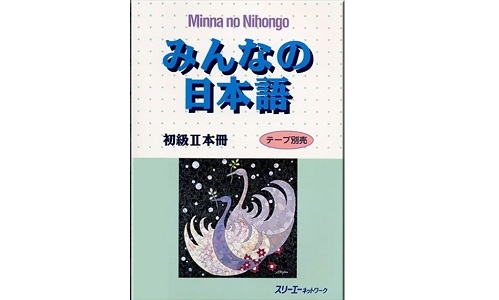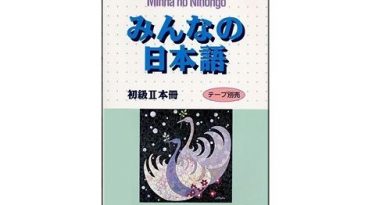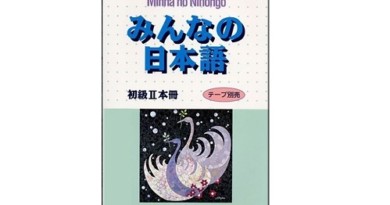Learn minna no nihongo lesson 6
Learn minna no nihongo lesson 6. hi everyone. In this post, Learn Japanese Daily will introduce you the very first lessons in the Japanese course-book : Minna no nihongo (Japanese for everyone)
Learn minna no nihongo lesson 6:
Summary :
In the lesson 6 learners will learn the vocabulary related to daily meals and also new structures.
As usual, the lesson is divided into 3 parts: vocabulary, grammar and reference words
First is vocabulary, about verbs:
たべます : eat
のみます : drink
すいます : to smoke
みます : look
ききます : listen
よみます : read
かきます : write
かいます : buy
とります : take picture
あいます : meet
Next, is about food:
ごはん : rice
あさごはん : breakfast
ひるごはん : lunch
ばんごはん : dinner
パン : bread
たまご : egg
さかな : fish
やさい vegetable
くだもの : fruits
みず : water
おちゃ : tea
こうちゃ : black tea
ぎゅうにゅう: milk
ジュース : juice
ビール : beer
おさけ: wine
みせ: store
レストラン : restaurant
にわ : garden
About film/movie:
ビデオ : video
えいが : movie
CD
てがみ : letter
しゃしん : picture
Next, is about study:
レポート : report
しゅくだい : homework
And the last is sport:
テニス: tennis
サッカ : soccer
Here are some communicative sentence:
おはなみ : cherry blossom viewing
いっしょに : together
ちょっと : a little bit or you can use in case to deny someone about something.
いつも : always
ときどき : sometimes
それから, after that, next
ええ : yes
いいですね : that’s nice
わかりました : understood
じゃまた see you soon.
Next, the grammar part.
There will be lots of structure in this part, so try to pay attention to it.
We had learned verbs that don’t require object like go, sleep, come…., but in some verbs like eat, drink, meet…that we learned above need the object right?
In the first structure of lesson 6 has the meaning of doing something, nouns combine with をand verb. The practical を is used to show the direct object of the verb. In the lesson 1 を in ひらがな is only use for practical.
To understand more about this structure let’s see the example.
ごはんをたべますmeans “I eat rice”
ビールをのみますmeans “I drink beer”
Another example: “I write book” 本をかきます
There is one thing to focus, in Japanese it is unnecessary to say “me” in a sentence. Therefore the sentences become much shorter and are still understood by the listeners.
You can see in the example above that didn’t use 私 but the listeners can still understand that “I eat rice” or “I drink beer”.
Next, move on to the second structure.
In Japanese, there are lots of nouns that are used as clarification for verbs.
します, and the structure Nをしますindicates the action to perform the content expressed in nouns.
For instance, テニスcombine with します will be
テニスをします “I play tennis”,
サッカをしますmeans “I play soccer”,
しゅくだいをします means “I do homework”
To ask “What are you doing?” the answer is なにをしますか.
For example:
“What did you do yesterday?” then you have to say 昨日何をしましたか
the answer is うちで寝ました means “I slept at home”
The question word “What” in Japanese sometimes pronounced なんor なに? There are rules to pronounce it.
For example, “What is it?” then it will be これはなんですか but in the example we have learned above
“What are you doing?” なにをしますか is pronounced as nani.
First we readなんin cases:
Standing behind the sound of surrenderた、だ、な it explains the question これはなんですかbehind it has the soundで belong to だ row, or in case, when it stands before suffix point out age, person, year, month…
For example, あきちゃんはなんさいですかmeans “How old is Aki?”. Other than the above case we’ll use なにlike なにをよみますか “What are you reading?”, this sentence doesn’t have the suffix of counting, behind doesn’t have the sound of た, だ, な then it will read なに.
Next, the fifth structure, it has the form NでV means doing what in where, in the last lesson we also learned NでV but the verbs shown the movement, and it also had the different meaning. In here the verbs has the meaning of action. The practical で in this sentence is used after location nouns to express the place that the action happened. For example:
“I bought a newspaper at the station” i will say えきでしんぶんをかいました or “I eat rice in restaurant”, the action of eating happen in restaurant, that’s why we have to sayレストランでごはんをたべます.
When you want to invite someone, we have the structureVませんか means want to do something?
For instance, “Do you want to have a meal with me?” it will be いっしょに ごはんを たべませんか
or このえいがをみませんか means “Do you want to see this movie with me?”
There is another structure used to invite or demand the listener to do something with the speaker, it is
Vましょうmeans doing something together. It shows the assertiveness of the speaker.
For example: いっしょに ひるごはんを たべましょう “Let’s have a lunch together.”
Learners have to distinguish the structure you learned above in the most accurate case.
Next, move on the final structure of the lesson today. In the last lesson we learned the prefixお in nouns国
to show the politeness of the speaker when mention the country name of the listener, in this lesson we also learn the prefixお, but in another way.
Prefix お can stand in fornt of a lot of words to show the politeness of the speaker
おさけ、おはなみ.
However, in some cases, although it stands in fornt of words but it has normal meaning, not as polite asおちゃ、 おかね.
Do pay attention on how to recognize which one is the polite and normal words. The more you learn, the more you will distinguish the words more easily.
Next part is the dialogue.
The situation is: After a 2-days holiday Aki and Tanaka met and talked to each other. The content of the dialogue was what they were doing during their holiday.
Aki: 田中君、休みはどう “Tanaka, how was your holiday?”
Tanaka: 秋ちゃん、休みは楽しかったです “Aki, it was great”
Aki: ええ、そうですか。何をしますか “Oh really. what did you do?”
Tanaka: うちで ははと りょうり をしました。秋ちゃんは “I stayed at home and cook with my mom. What about you?”
Aki: ああ、うちでいつもねました “I just slept at home”
Tanaka: そうですか. 今 いっしょに ごはんを たべませんか “”Really, do you want to have lunch now?”
Aki: ええ、いいですね “Yes, that’s nice”
Tanaka: じゃ、行きましょう “Let’s go”
Next, the reference words. In this lesson will introduce to you some new words about food.
Vegetables:
きゅうり : cucumber
とまと: tomato
なす : fish
まめ tofu
キャベツ : cabbage
ねぎ : Welsh onion
はくさい : white rap (Chinese cabbage)
ほうれんそう : spinach
レタス : lettuce
じゃがいも : potato
だいこん : white oriental radish
たまねぎ : onion
にんじん : carrot
Next is fruits:
いちご : strawberry
もも : peach
すいか : water lemon
ぶどう : grapes
なし : pear
かき : persimmon
みかん : mandarin
りんご : apple
バナナ : banana
About meat:
ぎゅうにく : beef
とりにく : chicken meat
ぶたにく : pork
ソーセージ : sausage
ハム : ham
What else, here is some kinds of fish. As you know japan is very famous in fish
あじ : scad
いわし : herring
さば : mackerel
さんま : mackerel pike
さけ : salmon
まぐろ : tuna
たい : sea bream
たら : gadid
えび : shrimp
かに : crap
いか : squid
かい : oyster
たこ : octupus
So, here are some new words about food. This is only for reference so, learners can also find more words outside of this lesson.
Question number 1: When doing something which structure will you use?
The answer is: Nをverb, For example: みずをのみます means “I drink water”
Next, let’s distinguish なん and なに. When do you useなんand when isなに?
The answer is なん, used when the word after the first character belongs toだ ,な, or when it stands before suffix indicating age, person, year, month… Otherwise we use なに
Third question: Which structure is used when doing something in somewhere?
The answer is: NでV
Next, to invite or demand somebody to do something with the person, how to say?
The answer is the structure: Vましょう
The last question: What if the prefix お stands before nouns has normal meaning?
The answer is yes for example: おかね、おちゃ. it has only normal meaning (money, tea)
In lesson 6 the vocabulary part has 5 subjects: verbs, food, film/cinema, sports and school equipment.
In cultural corner, we will tell you the situation of foods in Japan.
As we know, Japan is the third-largest economy in the world.
The amount exports of electronic components, machinery, car and other industrial products are very large.
The only thing Japan needs to import is food. Over 50% of food such as cereal, vegetables, fruits, meat need to be imported, only rice is self-sufficient.
Do you know why? The main reason is Japan is a resource-poor country, even in farm areas, all around covered by sea,
That’s why, agriculture in this country is very difficult to grow.
However, Japan is still considered a big exporter in the World.
Above is Learn minna no nihongo lesson 6. Check out other similar lesson in category : learn japanese for beginer or learn japanese with minna no nihongo. We hope with the instruction in this post, you will find that learning Japanese is not so difficult and you can learn Japanese by yourself. If you have any question, just leave us your question below the post.




really helpful, thanks 🙂